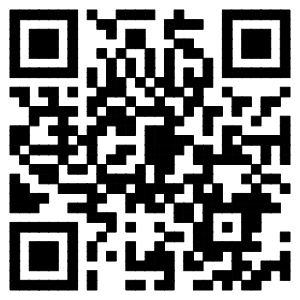2011年12月CET6阅读真题及参考答案
Section A
Directions: In this section, there is a short passage with 5 questions or incomplete statements. Read the passage carefully. Then answer the questions or complete the statements in the fewest possible words. Please write your answers on Answer Sheet 2.
Questions 47 to 51 are based on the following passage.
Leadership is the most significant word in today's competitive business environment because it directs the manager of a business to focus inward on their personal capabilities and style. Experts on leadership will quickly point out that "how things get done" influences the success of the outcomes and indicates a right way and a wrong way to do things. When a noted leader on the art of management, Peter Drucker, coined the phrase "Management is doing things right; leadership is doing the right things," he was seeking to clarify the distinctions he associates with the terms.
When Stephen Covey, founder and director of the Leadership Institute, explored leadership styles in the past decade, he focused on the habits of a great number of highly effective individuals. His Seven Habits of Highly Effective People became a popular bestseller very quickly. His ideas forced a reexamination of the early leadership paradigm (范例), which he observed centered on traits found in the character ethic and the personality ethic. The former ethic suggested success was founded on integrity, modesty, loyalty, courage, patience, and so forth. The personality ethic suggested it was one's attitude, not behavior, that inspired success, and this ethic was founded on a belief of positive mental attitude. In contrast to each of these ideas, Covey advocates that leaders need to understand universal principles of effectiveness, and he highlights how vital it is for leaders to first personally manage themselves if they are to enjoy any hope of outstanding success in their work environments. To achieve a desired vision for your business, it is vital that you have a personal vision of where you are headed and what you value. Business leadership means that managers need to "put first things first," which implies that before leading others, you need to be clear on your own values, abilities, and strengths and be seen as trustworthy.
注意:此部分试题请在答题卡2上作答。
47. To be good leaders, managers must pay close attention to their own _____.
48. According to Peter Drucker, leaders should be good at _____.
49. The personality ethic suggests that people are likely to succeed if they have _____.
50. According to Stephen Covey, leaders who hope to achieve outstanding success need first of all to _____.
51. Good leadership requires one to know one's own strengths and be able to win people's _____.
参考答案
47. values, abilities and strengths
48. doing the right things
49. positive mental attitude
50. manage themselves
51. trust
Section B
Directions: There are 2 passages in this section. Each passage is followed by some questions or unfinished statements. For each of them there are four choices marked A), B), C) and D). You should decide on the best choice and mark the corresponding letter on Answer Sheet 2 with a single line through the centre.
Passage One
Questions 52 to 56 are based on the following passage.
What's the one word of advice a well-meaning professional would give to a recent college graduate? China"} India! Brazil! How about trade!
When the Commerce Department reported last week that the trade deficit in June approached $50 billion, it set off a new round of economic doomsaying. Imports, which soared to $200.3 billion in the month, are subtracted in the calculation of gross domestic product. The larger the trade deficit, the smaller the GDP. Should such imbalances continue, pessimists say, they could contribute to slower growth.
But there's another way of looking at the trade data. Over the past two years, the figures on imports and exports seem not to signal a double-dip recession – a renewed decline in the broad level of economic activity in the United States – but an economic expansion.
The rising volume of trade – more goods and services shuttling in and out of the United States – is good news for many sectors. Companies engaged in shipping, trucking, rail freight, delivery,
and logistics (物流) have all been reporting better than expected results. The rising numbers sig?nify growing vitality in foreign markets – when we import more stuff, it puts more cash in the hands of people around the world, and U.S. exports are rising because more foreigners have the ability to buy the things we produce and market. The rising tide of trade is also good news for people who work in trade-sensitive businesses, especially those that produce commodities for which global demand sets the price – agricultural goods, mining, metals, oil.
And while exports always seem to lag, U.S. companies are becoming more involved in the global economy with each passing month. General Motors sells as many cars in China as in America each month. While that may not do much for imports, it does help GM's balance sheet – and hence makes the jobs of U.S.-based executives more stable.
One great challenge for the U.S. economy is slack domestic consumer demand. Americans are
paying down debt, saving more, and spending more carefully. That's to be expected, given what we've been through. But there's a bigger challenge. Can U.S.-based businesses, large and small, figure out how to get a piece of growing global demand? Unless you want to pick up and move to India, or Brazil, or China, the best way to do that is through trade. It may seem obvious, but it's no longer enough simply to do business with our friends and neighbors here at home.
Companies and individuals who don't have a strategy to export more, or to get more involved in foreign markets, or to play a role in global trade, are shutting themselves out of the lion's share of economic opportunity in our world.
注意:此部分试题请在答题卡2上作答。
52. How do pessimists interpret the U.S. trade deficit in June?
A) It reflects Americans' preference for imported goods.
B) It signifies a change in American economic structure.
C) It is the result of America's growing focus on domestic market.
D) It could lead to slower growth of the national economy.
53. What does the author say about the trade data of the past two years?
A) It indicates that economic activities in the U.S. have increased.
B) It shows that U.S. economy is slipping further into recession.
C) It signals decreasing domestic demand for goods and services.
D) It reflects the fluctuations in the international market.
54. Who particularly benefit from the rising volume of trade?
A) People who have expertise in international trade.
B) Consumers who favor imported goods and services.
C) Producers of agricultural goods and raw materials.
D) Retailers dealing in foreign goods and services.
55. What is one of the challenges facing the American economy?
A) Competition from overseas.
B) People's reluctance to spend.
C) Slack trade activities.
D) Decreasing productivity.
56. What is the author's advice to U.S. companies and individuals?
A) To import more cheap goods from developing countries.
B) To move their companies to where labor is cheaper.
C) To increase their market share overseas.
D) To be alert to fluctuations in foreign markets.
Passage Two
Questions 57 to 61 are based on the following passage.
A recurring criticism of the UK's university sector is its perceived weakness in translating new knowledge into new products and services.
Recently, the UK National Stem Cell Network warned the UK could lose its place among the world leaders in stem cell research unless adequate funding and legislation could be assured. We should take this concern seriously as universities are key in the national innovation system.
However, we do have to challenge the unthinking complaint that the sector does not do enough in taking ideas to market. The most recent comparative data on the performance of universities and research institutions in Australia, Canada, USA and UK shows that, from a relatively weak startingposition, the UK now leads on many indicators of commercialisation activity.
When viewed at the national level, the policy interventions of the past decade have helpedtransform the performance of UK universities. Evidence suggests the UK's position is much stronger than in the recent past and is still showing improvement. But national data masks the very largevariation in the performance of individual universities. The evidence shows that a large number ofuniversities have fallen off the back of the pack, a few perform strongly and the rest chase theleaders.
This type of uneven distribution is not peculiar to the UK and is mirrored across other economies. In the UK, research is concentrated: less than 25% of universities receive 75% of the research funding. These same universities are also the institutions producing the greatest share of PhD graduates, science citations, patents and licence income. The effect of policies generating long-term resource concentration has also created a distinctive set of universities which are research-led and commercially active. It seems clear that the concentration of research and commercialisation work creates differences between universities.
The core objective for universities which are research-led must be to maximise the impact oftheir research efforts. These universities should be generating the widest range of social, economic and environmental benefits. In return for the scale of investment, they should share their expertise in order to build greater confidence in the sector.
Part of the economic recovery of the UK will be driven by the next generation of research commercialisation spilling out of our universities. There are three dozen universities in the UKwhich are actively engaged in advanced research training and commercialisation work.
If there was a greater coordination of technology transfer offices within regions and a simultaneous investment in the scale and functions of our graduate schools, universities could, and should, play a key role in positioning the UK for the next growth cycle.
注意:此部分试题请在答题卡2上作答。
57. What does the author think of UK universities in terms of commercialisation?
A) They fail to convert knowledge into money.
B) They do not regard it as their responsibility.
C) They still have a place among the world leaders.
D) They have lost their leading position in many ways.
58. What does the author say about the national data on UK universities' performance in commercialisation?
A) It masks the fatal weaknesses of government policy.
B) It does not rank UK universities in a scientific way.
C) It does not reflect the differences among universities.
D) It indicates their ineffective use of government resources.
59. We can infer from Paragraph 5 that "policy interventions" (Line 1, Para. 4) refers to _____.
A) government aid to non-research-oriented universities
B) compulsory cooperation between universities and industries
C) fair distribution of funding for universities and research institutions
D) concentration of resources in a limited number of universities
60. What does the author suggest research-led universities do?
A) Publicise their research to win international recognition.
B) Fully utilise their research to benefit all sectors of society.
C) Generously share their facilities with those short of funds.
D) Spread their influence among top research institutions.
61. How can the university sector play a key role in the UK's economic growth?
A) By establishing more regional technology transfer offices.
B) By asking the government to invest in technology transfer research.
C) By promoting technology transfer and graduate school education.
D) By increasing the efficiency of technology transfer agencies.
参考答案
Section B
Passage One
53. A
54. C
55. C
56. B .
Passage Two
57. A.
58. B.
59. A.
60. A.
61. C.

 京公网安备 11010802024222号
京公网安备 11010802024222号




